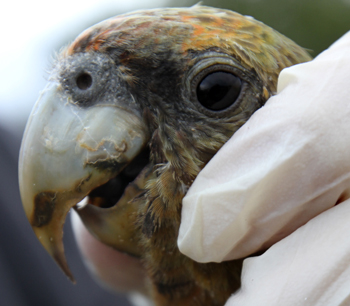
Photo: en.wikipedia |
Veterinary biotechnology focuses on microbial and molecular biological approaches to veterinary illnesses. The group working on veterinary biotechnology research at the University of the Free State (UFS) consists of two academic staff members, Prof Rob Bragg and Dr Charlotte Boucher, two post-doctoral fellows, Drs Chris Theron and Arina Hitzeroth, five PhD and three honours students.
The group has three research focus areas.
Dr Boucher says, “Our main focus area is infectious coryza in poultry, caused by the bacterium Avibacterium paragalliarum. The aim is the control of the disease, mainly through improvement of vaccines, understanding the immune response and improved biosecurity. A key objective is improving methods for serotyping; studying of selected surface antigens and investigating the influence recently discovered bacteriophages might have on virulence. We have co-operative projects with research groups in China, India and Israel.
“The second focus area is an expression system co-developed with the National Institute for Agronomic Research (INRA), France. The flagship project is the expression of the coat protein gene of the beak and feather disease virus, a disease affecting parrots, currently threatening the endangered Cape parrot. This system has led to the development of serological tests, currently under patenting. The application of this system has been extended to human-related diseases, with two interdisciplinary projects underway, co-working with Profs Muriel Meiring and Felicity Burt. Prof Meiring is working on diseases causing bleeding disorders, such as blood-clotting impairment, while Prof Burt is working on viral infections causing haemorrhagic (bleeding) disorders.
“We are also researching disease control in a post-antibiotic era, investigating the potential of phage-therapy by targeting and destroying pathogenic islands within a host, with reduced side-effects on the host itself.
“We have smaller projects, including an interdisciplinary project with Zoology, looking at the protein profile of amphibian (frog) secretions with the focus on antimicrobial activity, as these secretions assist with protecting amphibian skin against infections.”